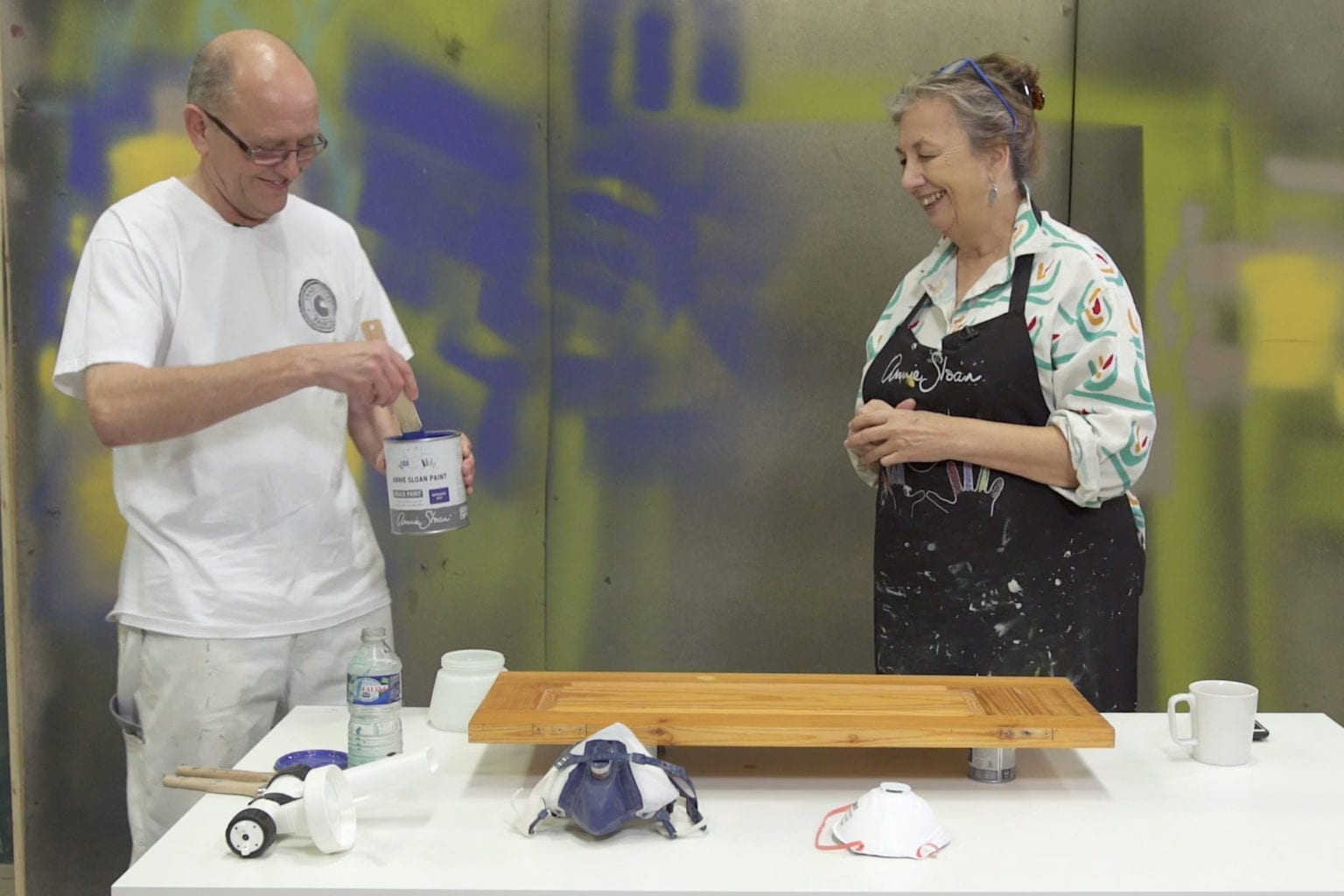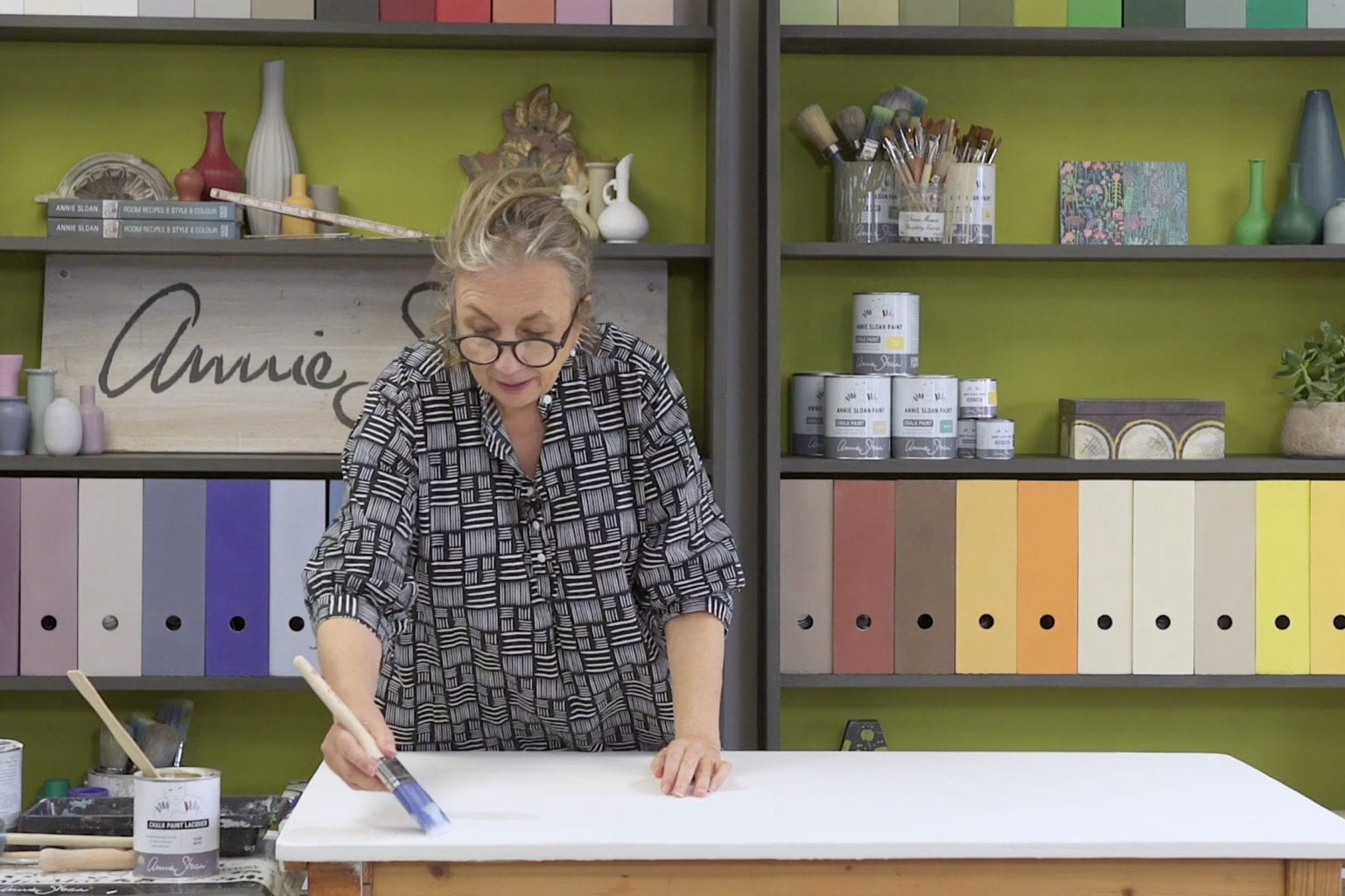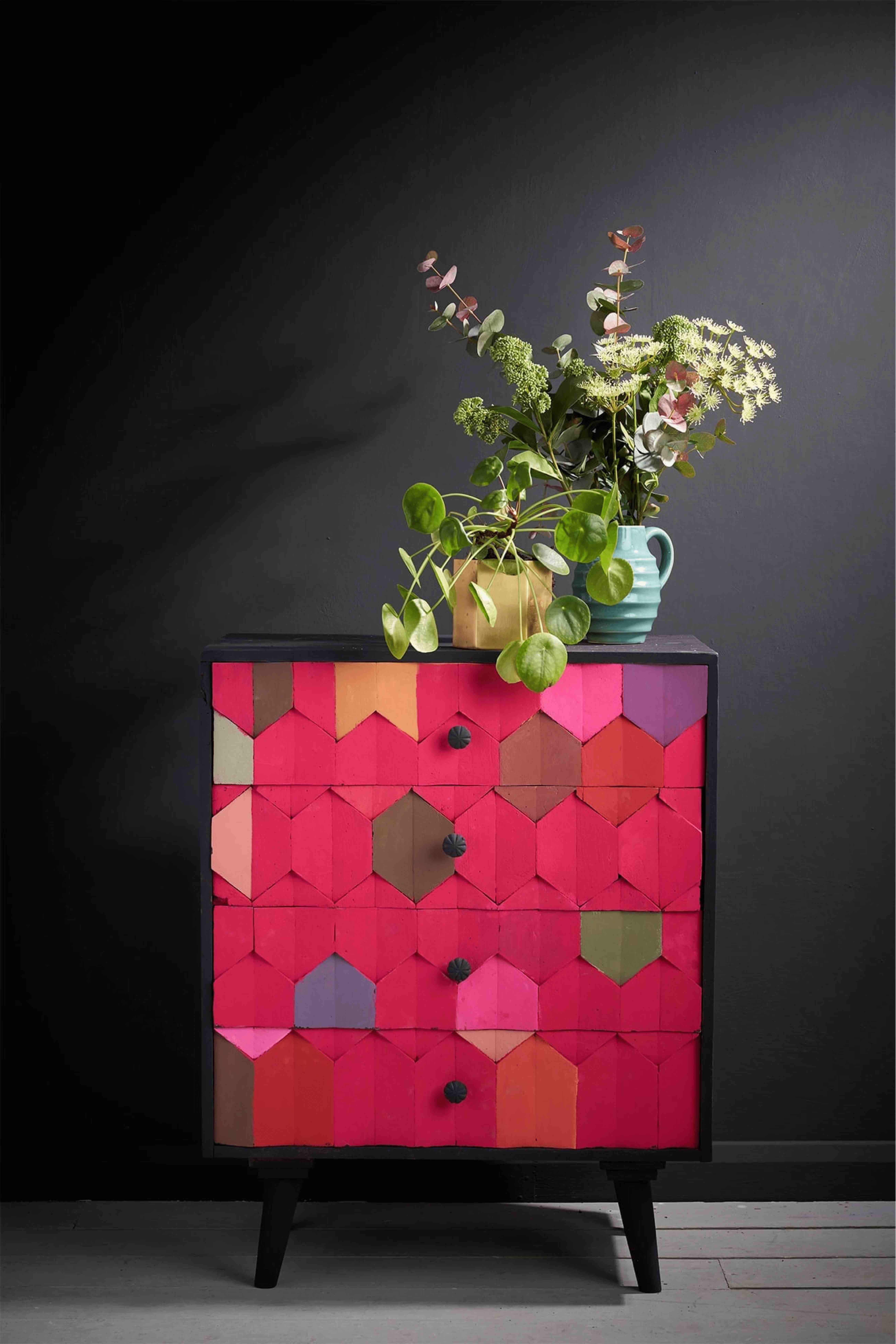Not all Chalk Paint® projects need a textured or aged finish. If you want a perfectly smooth finish on your paintwork try applying lacquer with a spray gun. Chalk Paint® Lacqer is a hard-wearing, water-based varnish, ideal for spraying on surfaces that will be handled frequently, such as your kitchen cabinets.
Your first step will be to apply Chalk Paint® with a spray gun. This will give you an even surface to spray your lacquer over. Using a spray gun is a more advanced technique that requires specialist kit, but when performed correctly guarantees a smooth, high spec finish. It’s also a quick and effective way of painting and varnishing large areas where a uniform finish is desired.
You will need:
• Chalk Paint® Lacquer
• Water
• A spray gun (in this tutorial, we’ve used the Wagner 2370386 Studio Home Décor Sprayer which is an HVLP spray gun)
• Respirator mask / partical mask
How to spray Chalk Paint® Lacquer
- First, stir the Chalk Paint® Lacquer well so all the ingredients are mixed in.
- Fill the spray gun pot to about half full with Chalk Paint® Lacquer (in either Gloss or Matt, the choice is yours).
- Add water in small increments, stirring thoroughly between pours to ensure the Lacquer and water are fully mixed, and so you don’t thin the Lacquer too much too quickly. To test the consistency, lift your mixing stick and let the Lacquer fall back into the pot. If it leaves a 3D trail on the surface, called a ‘worm cast’, then it is too thick. Keep adding water until no worm casts are left on the surface of the Lacquer. Only add as much water as is needed to remove these casts.
- Once the mixture is the right consistency and thoroughly mixed, set up your gun and connect the turbine.*Top tip*: leave the turbine on for around 5 minutes before spraying. You will know once it’s warm as the tube will feel hot to the touch. If the turbine is warm, the Lacquer will spray better.
- Put on your respirator mask. It is essential this is worn at all times whilst spraying any form of paint or lacquer.
- Set the flow dial to 1 and test spraying Lacquer on a surface that won’t be used for your finished project.
- Once you’re satisfied with the finish, you’re ready to start spraying your painted surface. Being careful not to touch your paintwork (any fingerprints will show up once the surface is varnished!), start by spraying the edges and any tricky bits first. Then apply the Lacquer in logical lines, overlapping each line by 50% to ensure the piece is fully covered.
- Be consistent in coverage when spraying Chalk Paint® Lacquer. Keep the same nozzle width when spraying, as any change in coverage can result in the Lacquer pulling.
- Once you’ve finished spraying, leave the varnished surface for around 30 minutes-1 hour for the Lacquer to dry before applying a second coat in the same manner.
Spraying Chalk Paint® Lacquer is a great way to achieve an even coating for kitchen cabinets, doors or any other painted surface that needs an extra strong layer of protection. If you prefer a sheen, choose our Gloss finish, otherwise go for Matt. Both are water-based and the trick to success with a spray gun is to thin the varnish just enough for the smoothest, silkiest finish. Check out our Lacquer Fact Sheet for more tips and ideas for working with Chalk Paint® Lacquer.



